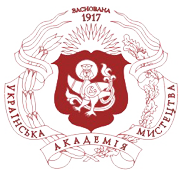MODERN APPROACHES TO THE ORGANIZATION OF PEDESTRIAN PUBLIC SPACES
DOI:
https://doi.org/10.32782/2411-3034-2025-37-4Keywords:
architectural and planning organization, sustainable development, human-centered design, pedestrian space, public space, green cities, barrier-free spaceAbstract
The aim of the article is to identify modern approaches to renovating transport-oriented environments in order to create high-quality pedestrian public spaces. Special attention is paid to the human dimension of the city, particularly the creation of safe, comfortable, inclusive, and ecological spaces. Research Methods. The study employs a comparative analysis of implemented urban projects and concepts that demonstrate the transformation of car-centric areas into pedestrian-friendly spaces. Both international and domestic experiences were examined to identify current renovation approaches. Examples of changes in streets, squares, and adjacent territories were analyzed according to the principles of sustainable development, climate adaptation, and enhanced social interaction. Results. Key approaches to organizing human-centered public spaces were identified: regulation and reduction of automobile traffic; integration of public transport infrastructure with public spaces; ecosystem restoration – solutions that contribute to the creation of safe, accessible, and ecologically balanced environments. Conclusions. The proposed approaches allow for rethinking the architectural and planning organization of the city, ensuring sustainable development, comfort, and the growth of social activity.
References
Jacobs J. Downtown is for People. Fortune. 1958. April. P. 125–131.
Jacobs J. The Death and Life of Great American Cities. New York : Vintage Books, 1992. 474 p.
Landry Ch. The Creative City: A Toolkit for Urban Innovators. 2nd ed. London : Routledge, 2008. 352 p.
Gehl J. Life Between Buildings: Using Public Space. Washington : Island Press, 2011. 216 p.
Gehl J. New City Spaces. The Danish Architectural Press, 2014. 264 p.
Gehl J. Cities for People. Island Press, 2010. 288 p.
Speck J. Walkable City: How Downtown Can Save America, One Step at a Time. New York : North Point Press, 2012. 312 p.
Трошкіна О., Нестерчук Ю. Особливості планувальної організації пішохідних зон. Проблеми розвитку міського середовища. 2013. № 9. С. 203–208.
Preservation Institute. The Freeway that was Built in San Francisco: The Embarcadero Freeway. URL: http://www.preservenet.com/freeways/FreewaysEmbarcadero.html (дата звернення: 12.04.2025).
Hernández-Lamas P., Gavilán A. R., Bernabeu-Larena J. Parks and Roads Build the Cities: The M-30 and Madrid-Rio Project Building Landscape. Conference: Virtual City and Territor. 2016, July. P. 415–428. ResearchGate. URL: https://www.researchgate.net/publication/362286051_Parks_and_roads_build_the_cities_the_M-30_and_Madrid-Rio_project_building_landscape (дата звернення: 12.04.2025).
Нові вали. Агенти змін. URL: https://www.a3.kyiv.ua/projects/novi-valy/ (дата звернення: 12.04.2025).
The High Line. Diller Scofidio+Renfro. URL: https://dsrny.com/project/the-high-line (дата звернення: 06.04.2025).
Choi J., Choi J. An Analysis on Seoullo 7017 in Terms of Spatial Configuration and Pedestrian Movement in Comparison with the High-line Project. Architectural Research. 2019. Vol. 21, № 2. 31–39.
Chehyun Ryu, Youngsang Kwon. How Do Mega Projects Alter the City to Be More Sustainable? Spatial Changes Following the Seoul Cheonggyecheon Restoration Project in South Korea. Sustainability. 2016. Vol. 8, № 11. ResearchGate. URL: https://www.researchgate.net/publication/310471826_How_Do_Mega_Projects_Alter_the_City_to_Be_More_Sustainable_Spatial_Changes_Following_the_Seoul_Cheonggyecheon_Restoration_Project_in_South_Korea (дата звернення: 12.04.2025).
Відновлення річки Хрещатик. Behance. URL: https://www.behance.net/gallery/103008541/vdnovlennja-rchki-hreschatik (дата звернення: 12.04.2025).





